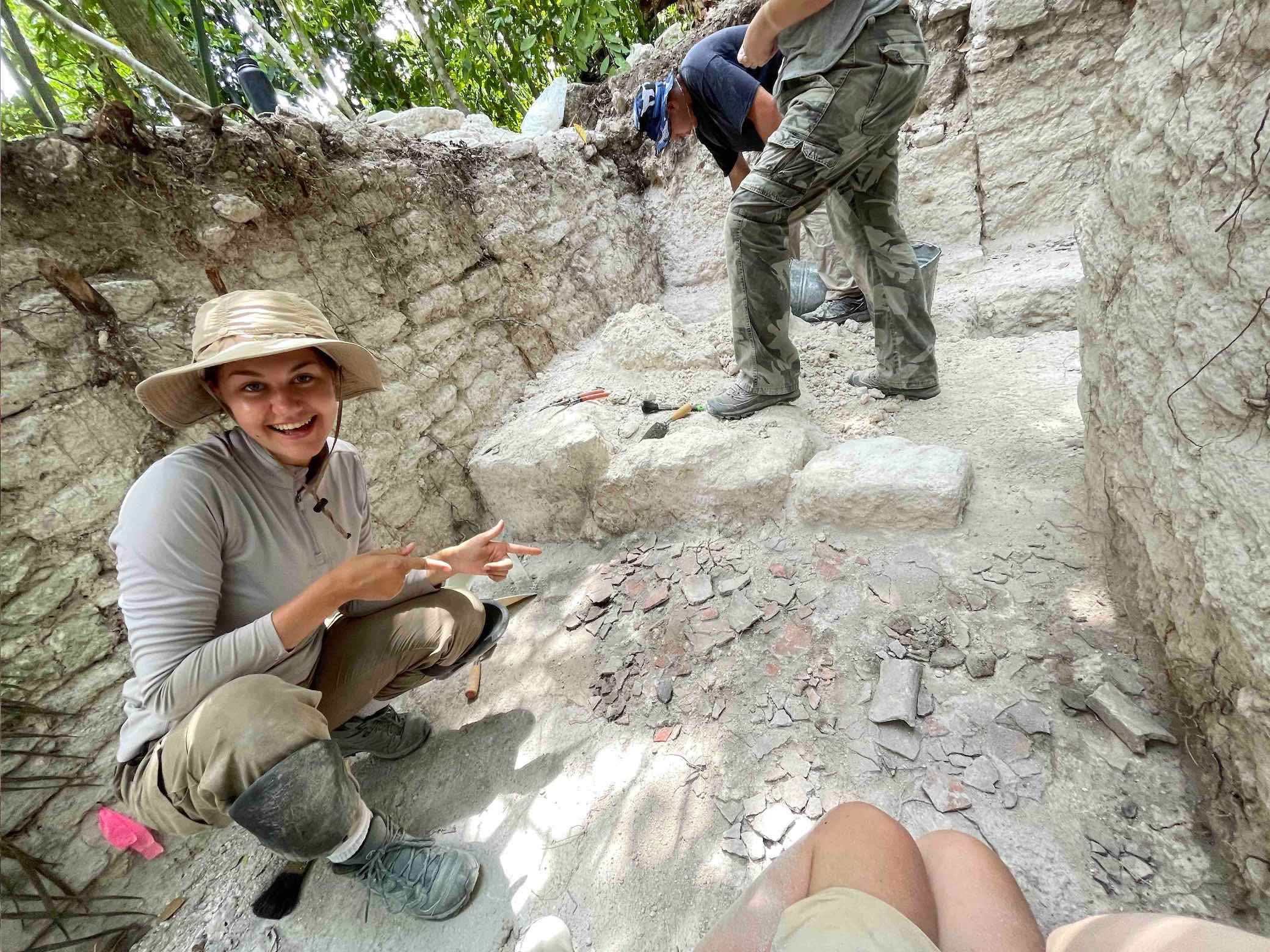Summer Archeological Field Course in Belize

Ka 'Kabish is an ancient Maya city located in North-Central Belize. Settled around 800 BC, the city survived three political upheavals, before finally ceasing to exist around AD 1500. Throughout its 2,300-year lifespan, Ka 'Kabish enjoyed a prosperous existence, and participating in long-distance trade networks that brought coveted materials such as jade and copper to the site. Currently, the site of Ka 'Kabish forms the basis for KARP, the Ka 'Kabish Archaeological Research Project, under the direction of Dr. Helen Haines, from Trent University. It also hosts researchers studying bats and other animal species. Although the site is currently private property, visitors are welcome during May and June when excavations are in progress. We are in the process of purchasing the site and having it incorporated into the Belize Archaeological Parks system.
Founded in 2007 by Dr. Haines, Ka 'Kabish Archaeological Research Project is centered around the ancient Maya city of Ka 'Kabish, in north-central Belize. Despite the wealth of knowledge about the ancient Maya, the bulk of our knowledge centers around sites in the Central Petèn and the Belize River Valley, with very little known about the politic landscape of north-central Belize. Research conducted by KARP attempts to address this gap by providing information not only from one of the largest known sites in the area, but from one of the longest surviving cities in the region as well.
This past summer, 20 courageous students packed their bags and embarked on a 5-week trip to excavate the site like their predecessors before them. Many of which had never been out of the country, much less an archeological field school. Thanks to a pre-departure event held by Kate Logan and the study abroad program, the students felt as prepared as they could be as they boarded the plane headed towards Belize, with a quick layover in Houston, Texas. One of the first things students noticed was the sweltering heat. On average the temperatures ranged from 35-40 degrees Celsius every day, while heat lightning storms barely provided relief at night. If the storms didn’t keep you up, then the Howler Monkeys definitely would. Imagine the sounds dinosaurs make and you’ll understand the calls of these mammals. Don’t worry if you did manage to sleep though because at 6:00 AM sharp the tortilla man would ride around the village on his bike to let you know the day had begun.
One thing students had to remember was to keep an eye out for animals; tarantulas, scorpions and snakes just to name a few. However, the real killers were the mosquitos and fire ants. Students spent Mondays to Fridays, from 8:00 AM to 4:30 PM on site learning how to create a unit, use a dumpy level and sift through the dirt. Saturdays were for town visits, to use WI-FI and go shopping, but mostly they were used by students to speak to family and friends back home. Sundays were for excursions to other archaeological sites, as they appear all over Belize. Halfway through, in week three, was the long weekend. Dr. Haines dropped the students off at the ferry in Belize city and they made their way to Caye Caulker, known to have some of the best scuba diving in the world, only next to the great barrier reef in Australia. A well-earned break after weeks spent in the muddy forest.
It sounds crazy to admit but to those who made the trip, everything eventually becomes normal after the first week. The early wake up calls and scheduled lunches, weekend trips to Orange Walk, and quick walks to the one convenience store in the village that sells ice cream. Making sure you check your shower for scorpions and spiders every morning and living isolated from the world during the week all grows on you. This experience isn’t for the faint of heart but for the ones who take the leap, it will be a trip you’ll never forget.



